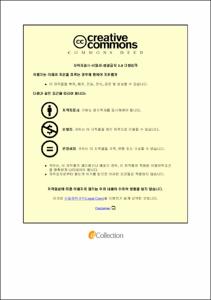자가 골연골 이식술 후 평균 6년 양적 MRI 추적 관찰 :임상결과 및 관절 연골의 질적 형태학적 평가
- Alternative Title
- Serial quantitative MRI following osteochondral autograft transfer surgery demonstrates stable cartilage properties despite partial morphologic degeneration: A mean 6-year follow-up study.
- Abstract
- Background: Osteochondral autograft transfer surgery (OATS) is preferred because of its ability to replace defective cartilage with hyaline cartilage. However, longitudinal changes in hyaline cartilage status after OATS and their correlation with clinical outcomes remain unclear.
Purpose/Hypothesis: We hypothesized that (1) cartilage quality and morphology as evaluated by quantitative magnetic resonance imaging (MRI) would remain stable over a midterm follow-up period, and (2) interval changes in clinical outcomes would correlate with changes in either qualitative or morphologic outcomes.
Study Design: Case series; level of evidence, 4.
Methods: Among patients who underwent OATS between 2002. and 2019, those who underwent serial follow-up MRI at both the short-(1–3 years postoperatively) and mid-term (3–10 years postoperatively) were retrospectively reviewed. Magnetic Resonance Observation of Cartilage Repair Tissue (MOCART) 2.0 knee score was performed for morphological assessment of the cartilage. Cartilage T2 relaxation time (CRT2) was measured to assess cartilage tissue biocomposition. Clinical outcomes were assessed using the Lysholm score, International Knee Documentation Committee (IKDC) score, Tegner score, and the visual analog scale (VAS) for pain. Correlation analysis was conducted between clinical and MRI outcomes.
Results: A total of 23 patients with a mean age of 30.2±11.1 years (range, 16–49 years) were enrolled in this study. The mean short-term follow-up period was 1.3±0.4 years, and the mean mid-term follow-up period was 6.0±2.3 years. Between the follow-up intervals, the MOCART score decreased from 84.0±10.2 to 72.3±23.6 (P=.003). The CRT2 of the deep layer remained stable (P=.507), while the superficial layer improved from 50.6±5.6 to 48.0±5.0 (P=.019). Significant improvements were observed in the Lysholm, IKDC, and VAS scores that remained stable during the follow-up period. However, neither a decreased MOCART score nor an improved CRT2 value affected the changes in clinical outcomes.
Conclusion: The tissue properties of the entire cartilage layer remained stable until the mid-term follow-up following OATS. Despite partial morphological degeneration, the MOCART score at mid- term follow-up still indicated a good cartilage status, and this degeneration did not lead to deterioration in clinical outcomes.
- Issued Date
- 2024
- Awarded Date
- 2024-08
- Type
- Dissertation
- Alternative Author(s)
- Lee Hyo Yeol
- Affiliation
- 울산대학교
- Department
- 일반대학원 의학과
- Advisor
- 김종민
- Degree
- Doctor
- Publisher
- 울산대학교 일반대학원 의학과
- Language
- eng
- Rights
- 울산대학교 논문은 저작권에 의해 보호받습니다.
- Appears in Collections:
- Medicine > 2. Theses (Ph.D)
- 파일 목록
-
-
Download
 200000812570.pdf
기타 데이터 / 1.25 MB / Adobe PDF
200000812570.pdf
기타 데이터 / 1.25 MB / Adobe PDF
-
Items in Repository are protected by copyright, with all rights reserved, unless otherwise indicated.